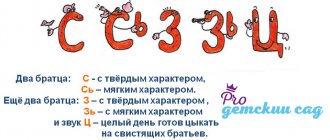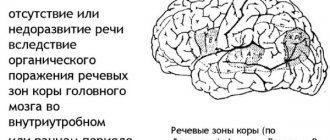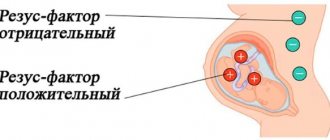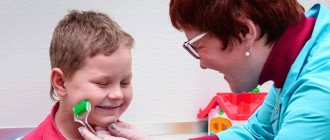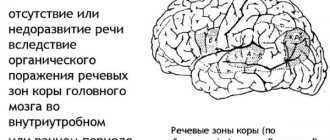Speaking is a skill whose importance is difficult to overestimate. People communicate with each other automatically and do not even think about what speech mechanisms are involved in the process. There are a lot of sounds we pronounce, but pronouncing some of them causes certain difficulties.
Speaking is a skill whose importance is difficult to overestimate. People communicate with each other automatically and do not even think about what speech mechanisms are involved in the process. There are a lot of sounds we pronounce, but pronouncing some of them causes certain difficulties.
Usually, by the age of 4-5 years, a child can already pronounce almost all sounds. Unfortunately, some letters are much more difficult to master than others. Problems often arise with the pronunciation of the sound L. Kids stammer, distort words and “lisp.” And if in kindergarten this causes affection, then at school the inability to pronounce all sounds correctly can become a serious problem. How to teach a child to say the letter L? It turns out that there are a number of effective techniques that can eliminate such a speech defect at home.
Lambdacism
Speech therapists call the inability to pronounce the sounds “L” and “L” correctly the term lambdacism. This means that the sound is not only mispronounced, but is also missed. This could be a congenital speech defect or simply incorrect pronunciation. Lambdacism, in turn, is divided into several types:
- Bilabial. In this version, the child replaces “l” with the sound “u”. For example, he says “horse” instead of “horse”. The lips are involved in pronunciation, the tip of the tongue is lowered, resting at the bottom of the oral cavity.
- Nasal. In this case, instead of “l”, “ng” is pronounced. For example, instead of “forest” you get “nges”. The root of the tongue touches the soft palate, and air is directed into the nose, which helps replace sound.
- Interdental. During pronunciation, the tip of the tongue goes into the space between the teeth.
- No sound is produced at all. For example, instead of “spoon,” “ozhka” comes out.
Why doesn't the child pronounce [l]?
Usually, by the age of 5-6 years, children pronounce almost all sounds. But quite often you can find children (and adults) whose pronunciation of the sounds [l] and [l'] is impaired. Moreover, producing a solid sound is difficult.
The reasons for incorrect pronunciation are different. Often this is the result of parents lisping with the baby, repeating words after the baby, and the desire to “chat in the child’s language.” This problem is also relevant in bilingual families where Russian is not their native language. Of course, if the parents themselves do not pronounce certain sounds, then their children will speak the same way.
There may also be physiological factors - problems with hearing, with proper breathing, the structure of the articulatory apparatus. Very often, a child does not pronounce [l] due to a short frenulum of the tongue, but with the help of special exercises it can be stretched (and not cut, as was done before).
By the way, parents’ request to teach their child to “pronounce the letter “L” is not entirely correct. We pronounce sounds and use letters to designate them when writing.
Difficulty pronouncing the sound [L]
Incorrect pronunciation of the sounds [l] and [l'], their omission in speech are designated by the term lambdacism.
Types of lambdacism:
- bilabial, when the sound is pronounced only with the lips and instead of “l” the result is “u” (“uampa” instead of “lamp”);
- nasal, in which, due to the incorrect position of the tongue, the air flow rushes into the nose and [l] sounds like [ng] (“ngampa”);
- interdental – if the tip of the tongue is between the teeth;
- the sound in speech is omitted (“ampa”).
Replacing hard [l] with other sounds is called paralambdacisism. These include:
- replacement with [g] - “gastochka” (“swallow”), “guna” (“moon”);
- replacement with [v] - “mavysh” (“baby”), “yabvoko” (“apple”);
- replacement with [d] - “doshad” (“horse”), “dyzhi” (“skis”);
- replacing with [j] - “yomtik” (“slice”);
- replacement with [u] - “usichka” (“chanterelle”);
- a situation when a child softens the sound by saying [l'] - “lampa” (“lamp”).
These pronunciation deficiencies can be corrected by doing simple, entertaining exercises every day.
Paralambdacism
This term refers to the replacement of the correct “l” sound with another. For example:
- “g” – pronounced “kogeno” instead of “knee”
- “v” – pronounced “stov” instead of “table”
- “e” – pronounced “yokot” instead of “elbow”
- “l” – pronounced “lyozhka” instead of “spoon”
All these flaws in pronunciation can be treated by regularly doing exercises with a speech therapist and at home. Specialists are often expensive, but there are cases when just one lesson with a doctor on speech production gives a positive result, and consolidation can already be done at home.
Reasons for incorrect pronunciation of “L”
There are no unexplained causes of speech impediment. Doctors identify only three main conditions under which children cannot pronounce “l” correctly:
1. In speech, the child does not perceive “L” phonemically.
Phonemic hearing is what allows a person to distinguish one speech sound from another, hear words correctly and understand them well. Doctors recommend developing this hearing in babies from birth. That is, you need to talk to children without distorting words, so that they hear what will later be used in everyday speech. It must be remembered that written language is also formed on the basis of oral speech. Phonetic awareness thus influences future reading and writing skills. Normally, by the age of 4, a child should confidently distinguish one sound from another and not confuse “night” with “daughter” and “bear” with “mouse.”
2. The second reason for the incorrect pronunciation of “l” is the short hypoglossal ligament, due to the anatomical structure.
3. The inability to say “l” can also be a consequence of weak muscle tissues of the tongue.
We should not forget that for two- to three-year-old children, errors in speech starting with “l” are considered the norm. The formation of the correct pronunciation of “L” refers to older ages - 4 and even 6 years.
Correct articulation of "l"
When pronouncing any sound, certain organs work. The totality of their actions necessary for the speech apparatus to make a certain sound is called articulation. What organs are involved in the correct pronunciation of the sound “l”? These are lips, teeth, and tongue. All important articulatory instruments are involved. When pronouncing “l” correctly, the following happens:
- The lips occupy the position dictated by subsequent consonants and vowels
- The tip of the tongue rests on the upper incisors or their gums
- The edges of the palate, lips and the entire oral cavity are not connected to the upper incisors, so there are passages for exhaled air on the sides
- the root of the tongue rises when pronouncing the hard “L”
- the soft palate is also raised, blocking the passage into the nasal cavity
- The vocal cords should be closed and their vibration can be felt
If all these conditions are met, the correct pronunciation of the hard sound “l” is obtained. For soft, there are a number of conditions:
- It is not the root of the tongue that is raised, but the anteromedial part of its back
- There is a closure of not only the tip of the tongue with the gums, but also most of the back of the tongue with the alveoli
- Often a soft “l” is produced if the tip of the tongue is lowered and the front part of the back closes with the alveoli
Some speech defects can be corrected by imitation. That is, by teaching the child to repeat sounds, syllables and words by ear. As experts note, in the case of the “l” sound, using only this method will not work. Precisely because of the complex articulatory work of organs. You will have to work on setting them up point by point. Especially if difficulties arise due to weak muscle tissue of the tongue.
Speech gymnastics
Articulation gymnastics is a set of exercises aimed at developing the organs of speech and hearing. Regular training of this kind will help you learn to pronounce any sounds correctly and clearly, including “L”:
- "Active dating" Introduce your baby to all the organs that are involved in conversation: lips, tongue, cheeks, palate. Ask your child to sit in front of the mirror and carefully look at what is where and how it can move. During the process, the baby will quietly warm up the oral organs, warm them up and prepare them for classes.
- Correct breathing. Most of the letters are pronounced while exhaling. And in order for the pronunciation to be clear and clear, it is necessary to control the amount of air. A child's favorite breathing exercises may include blowing soap bubbles or balloons, floating paper boats, or blowing out candles.
- Smile. It is important to remember that the L sound must be pronounced with a wide smile. Invite your child to smile with his mouth closed from ear to ear and hold the grimace for 10 seconds.
A number of scientific studies have proven that fine motor skills of the hands directly affect the formation of children's speech. If you want your child to speak sounds beautifully and to deliver his speech correctly, buy him small toys and plasticine.
Before starting exercises for pronouncing the sound “L”, you should show your baby the correct position of the articulatory organs:
- The tip of the tongue is located at the base of the upper teeth or alveoli, and it can also rest against the space between the jaws.
- The exhaled air should pass along the sides of the tongue.
- The sides of the tongue do not touch the cheeks and chewing teeth.
- The root of the tongue is in an elevated position, the vocal cords are tense and vibrate.
- The soft palate covers access to the nasal cavity.
Usually, a child does not have any particular difficulties mastering the mechanism of pronouncing the sound L, so a visible result is observed after just a few lessons.
Mistakes when trying to pronounce "l"
Among the errors when pronouncing “l” there are the most common ones. They occur in both children and adults, but it is best to correct them at a young age, when the speech apparatus is just subject to adjustment. The most popular mistakes:
- Instead of “l” it sounds “y”. For example, the word “lie down” will be pronounced “yoozhsya”. This happens because the tongue is pulled too far into the depths of the oral cavity.
- Instead of “l”, a combination of “uva” sounds is pronounced. So, “took” will turn into “took”. The lips are placed incorrectly here.
- Replacing “l” with the sound “r”. For example, “medicine” instead of “medicine”.
- Instead of “l”, a sound similar to “f” or “n” is heard. This occurs due to a sharp, forced exhalation and participation in the articulation of the cheeks or nose.
From soft “L”
A turkey and a turkey hen are standing next to each other. Dad says “LLLL”, and son “LLLL”. “I want it like you, dad.” The father replies: “Okay, I’ll teach you, but let’s invite the boat to visit, it probably sailed for a long time.” The weather is bad, he is cold. Let’s give him some tea.” They poured tea into a cup. They treated him to sweet straws. The little turkey told how he kneaded the dough for the tubes - “five-five-five” and “cha-ta-cha” and rolled it up. And Mickey showed how he raises his sail. And the little turkey rode up and down on the waves. (swing)
Very often, children already have the sound Л or put it first. There is a replacement of L in speech with L. This happens because in soft sounds there is palatalization, the closure of the palate is not with the tip of the I, but with the back, the I has an incorrect tone, and its tip is not pronounced. Therefore, it is necessary to massage the tongue so that it is wider, and the following exercises are also shown:
- cup
- sail
- knead the dough
- straw
We ask the baby to lightly bite the tip of his tongue, “scratch” it with his nail, so that he understands where to rest against the palate (and behind the teeth). We make a “swing” so that you can feel the difference between the convex and concave position of the tongue in the mouth.
The little turkey helped set the sail, tapped his beak “DDDD” “Dad, I can’t do it like you. I want to show Mickey how to buzz.” The father helped the turkey and supported him with his wing
- Place your finger in the chin fossa. The baby pronounces “LLLL”, you need to feel the hole from below, press lightly, if there is no deviation away from the midline and problems with the bite, then a hard phoneme will reflexively be obtained.
- Press your chin from below with your palm. When pronouncing “L”, rest your chin on the back of your hand. When the pronunciation of L becomes stable, the patient can hold his own hand.
Preliminary articulation exercises
Before moving directly to exercises for making the sound “l”, experts advise doing a series of articulation tasks, the so-called articulatory gymnastics, which precedes the approach to making the sound “l”. This is a kind of tuning of the speech apparatus to master the rebellious sound. Here we work on the movements of the lips and tongue.
To begin with, the child is told and shown the structure of the mouth: lips, upper and lower; behind them are the teeth, upper and lower; at the top - a tubercle; behind it is the hard palate, it continues with the soft palate and ends with the velum palatine, on which there is a uvula. If a child is diagnosed with lambdacism in any form, then first you need to do the following articulation exercises (perform every day in front of the mirror, counting from one to five, for five to ten minutes, twice a day):
- “Smile” - part your lips into a smile, exposing your upper and lower teeth.
- “Tube” - lips are closed and extended forward.
- “Tongue punishment” - the tongue remains on the lower lip, it is spanked, saying “Pa-pa-pa.”
- “Cleaning the upper teeth” (from the inside) - the tongue is made wide, it is moved from side to side at the upper tubercles, also known as alveoli.
- “Sail” - the tip of the tongue should be rested on the row of upper front teeth. The tongue is like a hammock that has sagged. There is no need to move the tongue, it is simply held in this position while counting. The longer you can hold on, the better.
- “The cat drinks milk” - a wide tongue licks the upper lip from top to bottom.
- “Turkey chatter” is the same as in the “cat” exercise, but the movements are fast and accompanied by the sounds “bl-bl-bl-...”.
- “Swing” - with your mouth slightly open, you need to smile widely. On the count of “1-2”, the tip of the tongue rests on the upper and then on the lower incisors (from their inner side).
- “Horse” - click the wide tip of the tongue on the palate behind the upper front incisors. The mouth is open, but the lower jaw does not move at all.
- “Fungus” - the tongue seems to be glued to the palate, the hyoid frenulum is tense.
It is recommended to carry out such gymnastics for two to four weeks. In this way, the skill is developed to fix the necessary articulatory posture, accurately make all movements and monitor the lips, tongue and the entire speech apparatus.
The steamboat is humming
The steamboat failed to make a sound. There is no wind, complete calm, the sail does not inflate. It doesn’t matter, I’ll try to row with oars. The paddles are wide (“shovel” - a wide tongue lies on the lower relaxed lip). The oars splash through the water (five-five-five and cha-cha-cha)
The simplest and most reliable method, if there are no complications such as dysarthria and adenoiditis. We squeeze the wide I between Z and try to pronounce the sounds Y or L. Sometimes it works right away. But sometimes you have to make preparations:
- spatula (pancake) - holding the wide I on the free lower lip - “pancake on a plate”, smoothly slide it into the mouth, stopping it between the teeth
- “knead the dough” - we slap the I with our lips “five-five-five” and teeth “cha-cha-cha”, then “cha-cha-cha” or “ta-ta-ta” (whatever happens) we translate into lalala or Lala, accordingly, tapping, we press the tongue with our teeth and pull “LLLLLL” and “LLLLL”
Speech therapy exercises for the sound “L”
After mastering articulatory gymnastics, you can proceed directly to producing the sound “l”. The following exercises are used:
1. Imitation method: the student is shown how to correctly articulate the sound “l”. Smile, open your mouth slightly, open your teeth so that you can place your finger between the upper and lower teeth. The wide tip of the tongue rises and presses against the tubercles, when exhaling, the air flows along the sides, the cheeks vibrate. The child pronounces “l” after the adult. The sound should be produced when the tongue is torn away from the tubercles.
2. Setting from interdental sound (this method is not used if the defect is due to interdental lambdacism). An adult tells a fairy tale “About a steamboat that learned to whistle.”
“Once upon a time, a very tiny one sailed along the sea along with large steamships. He did everything the same as adults, but no one paid attention to him. All because he did not know how to speak - to make a steamship whistle. Instead of the beautiful “L”, he made some incomprehensible and very timid sounds. One day the steamboat decided to learn how to talk and hum like a big one. He learned by saying: “U!O! Everything is wrong." Nobody answered him and there was no dial tone. The steamboat was so upset that he bit his tongue and said: “Y.” Then an amazing thing happened: a clear and clear “L” flashed over the sea. The steamboat said it. He thought, “It must have seemed like it,” and tried again. He bit his tongue again and said: “Y.” It turned out to be a beautiful “L”. And suddenly large steamships began to answer him from all sides: “L!” "L!" So all the big ships learned about the tiny steamer, and it became heard throughout the whole sea.”
After listening to this fairy tale, the child performs all the actions behind the steamboat. He, like a fairy-tale character, may not immediately, but he should get the sound “L”. After this has happened, it must be combined with vowels. It is allowed in the reverse order IL, YL, OL, etc.
3. Method for bilabial lambdacism.
The main thing in this exercise is to learn to subjugate unruly lips. Often they are to blame for poor pronunciation - they stretch out into a tube, wrap themselves up and produce the sound “v” at the output. Speech therapists associate the inability to position the lips correctly with a long period of weaning from the pacifier. The “Smile” and “Fence” exercises are recommended: the lips are specially stretched as much as possible in a smile, the front teeth are exposed and clenched. This position must be fixed and maintained for as long as possible. At first you can’t do this without the help of an adult - you need to hold your lips, parting them into a smile.
4. Setting “L” from soft “L”
At first, learning is possible by pronouncing a soft sound instead of the correct “L”. Then it should be “tidied up” by teaching the child to pronounce the syllables LO, LU, LY, LA, touching the upper lip with the end of the tongue. And gradually removing it behind the upper teeth. It is recommended to massage the muscles around the mouth and lightly spank them with your fingers.
Three exercises to relax your muscles:
- “The horse snorts” - blow hard on your lips, imitating a horse.
- “Fish” - slap your lips together, imitating a fish.
- “Tired” - blow hard on parted lips.
Automation of the sound "L"
To fix the sound after at least a month of work, you need to use the following methods:
- Pronounce soft syllables and words. For example: “Lyu: cradle, people, love.”
- Learn and speak simple phrases. “LE-LE-LE – leaves were lying on the ground” and others. You can compose them yourself.
- Come up with and repeat funny poems and tongue twisters starting with “L”.
- When a sound is produced in direct syllables, you need to fix it in reverse ones. OL, EUL, etc.
Be sure to control the position of your tongue in the mirror. And do not overload the texts with words with the letter “R”. The child must focus on one complex sound.
Automation of the hard “L” occurs by analogy. First, the child repeats after the adult, then does the exercises himself.
The exercises suggested above can be done independently at home. But if there is no improvement, you should definitely go to a speech therapist.
How to automate the sound [l']?
It’s better to start with a soft [l’], pronouncing the syllables “la”, “le”, “lyu”, then move on to the words: “earth”, “light”, “Lyuba”.
Pure sayings are useful (you can come up with them yourself), for example:
- Li-li-li, we found a berry.
- Lu-lu-lu, I'll water the cabbage.
Then we move on to the reverse syllables: “al”, “el”, “il”. With your child, compose words and phrases with these syllables: “tulip”, “chair”, “cartoon”.
We gradually add consonants: s, p, k, v, g, f (“klu”, “klya”, “kli”, etc.). We pronounce the words: “beak”, “oath”, “nickname”.
